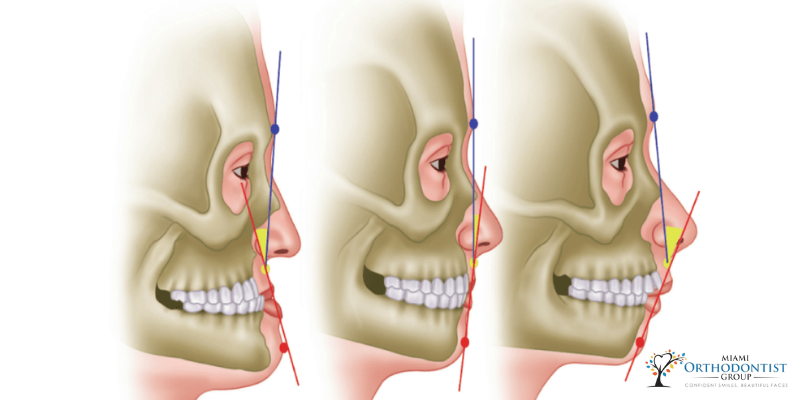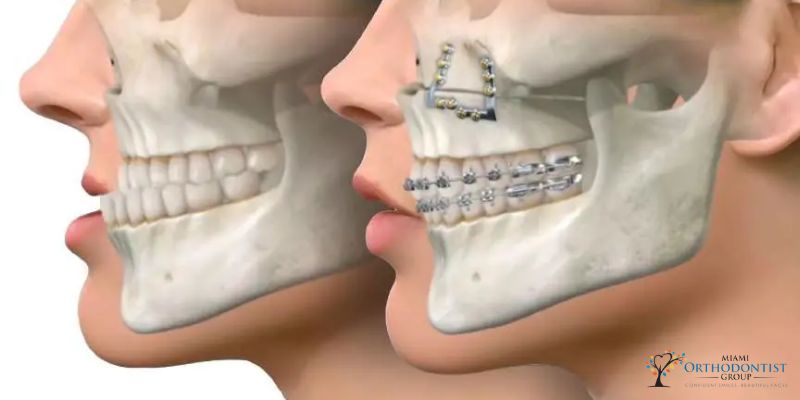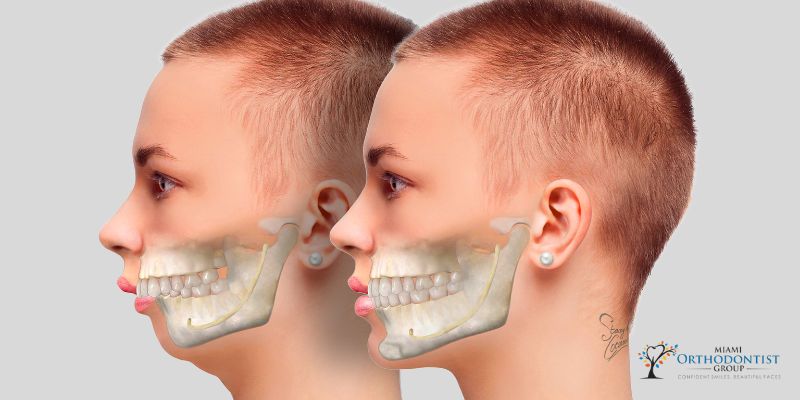Orthognathic surgery, a transformative intervention in oral and maxillofacial surgery, is pivotal in enhancing oral health by addressing a spectrum of bite issues. Beyond their aesthetic impact, these procedures offer holistic solutions to malocclusions, skeletal abnormalities, and airway concerns.
This article explores the multifaceted contributions of orthognathic surgery, from the intricate surgical techniques employed to the collaborative efforts between oral and maxillofacial surgeons and orthodontists. We delve into the psychosocial and long-term implications, emphasising the comprehensive approach that reshapes smiles and lives. Orthognathic surgery is a beacon of innovation, offering individuals a path to improved oral function, aesthetics, and overall well-being.
The Role of Orthognathic Surgery in Treating Bite Issues
Correction of Malocclusions
 One of the primary functions of orthognathic surgery is the correction of malocclusions, which refer to irregularities in the alignment of the upper and lower teeth. Malocclusions can lead to various issues, including difficulty biting or chewing, speech problems, and even temporomandibular joint (TMJ) disorders.
One of the primary functions of orthognathic surgery is the correction of malocclusions, which refer to irregularities in the alignment of the upper and lower teeth. Malocclusions can lead to various issues, including difficulty biting or chewing, speech problems, and even temporomandibular joint (TMJ) disorders.
Through precise surgical techniques, orthognathic surgery aims to reposition the jaws, ensuring proper teeth alignment for optimal function. This enhances the patient’s ability to chew and speak and prevents long-term oral health problems associated with malocclusions.
Additionally, orthognathic surgery can positively change facial aesthetics, boosting confidence and self-esteem for individuals who may have experienced social and psychological challenges due to jaw discrepancies.
Addressing Skeletal Abnormalities: The Core of Orthognathic Surgery
 Orthognathic surgery is particularly effective in addressing skeletal abnormalities contributing to bite issues. Skeletal discrepancies can manifest as an overbite, underbite, or crossbite, often resulting from genetic factors, developmental issues, or trauma.
Orthognathic surgery is particularly effective in addressing skeletal abnormalities contributing to bite issues. Skeletal discrepancies can manifest as an overbite, underbite, or crossbite, often resulting from genetic factors, developmental issues, or trauma.
These conditions affect the appearance of the face and the function of the jaw and surrounding structures. Orthognathic procedures involve precise repositioning of the upper and lower jaws, sometimes requiring bone adjustments. By addressing the underlying skeletal abnormalities, orthognathic surgery improves the alignment of the teeth and establishes a harmonious balance in the facial features.
The correction of skeletal abnormalities through orthognathic surgery goes beyond cosmetic enhancements. It is pivotal in preventing further oral health complications from untreated bite issues. Untreated skeletal discrepancies can lead to excessive wear and tear on the teeth, an increased risk of gum disease, and temporomandibular joint dysfunction. In addition to enhancing the aesthetics of the face, orthognathic surgery contributes to the overall longevity of the oral structures, promoting a healthier and more functional mouth.
Improving Airway Function: Orthognathic Surgery and Breathing
Beyond its impact on dental and facial aesthetics, orthognathic surgery significantly improves airway function for individuals with bite issues. Skeletal abnormalities, such as a retruded or protruded jaw, can affect the size and shape of the oral and pharyngeal airways.
This can contribute to obstructive sleep apnea (OSA), a condition characterised by repetitive pauses in breathing during sleep. Orthognathic surgery addresses these concerns by repositioning the jaw to optimise the airway’s dimensions, reducing the risk of airway obstruction and associated breathing difficulties.
The Collaborative Approach: Orthodontics and Orthognathic Surgery
Orthognathic surgery often involves a collaborative effort between oral and maxillofacial surgeons and orthodontists. Before surgery, patients typically undergo orthodontic treatment to align the teeth within the newly established jaw position. Orthodontics helps create a stable and aesthetically pleasing occlusion, setting the stage for the surgical phase. This collaborative approach ensures that oral health’s functional and aesthetic aspects are addressed comprehensively.
Depending on the individual case, orthodontic treatment may involve braces or clear aligners. This pre-surgical orthodontic phase facilitates the surgical process and contributes to the long-term stability of the results. The coordination between orthodontics and orthognathic surgery underscores the importance of a multidisciplinary approach to achieving optimal outcomes for patients with bite issues. By combining the expertise of orthodontists and oral and maxillofacial surgeons, individuals can benefit from a comprehensive treatment plan that not only corrects their bite issues but also enhances their overall oral health and quality of life.
Post-Surgical Recovery and Long-Term Benefits
Orthognathic surgery is a transformative process that extends beyond the operating room, emphasising post-surgical care and recovery. Following the surgical intervention, patients undergo a recovery period during which they may experience discomfort and swelling. However, the long-term benefits far outweigh the temporary inconveniences. As the healing progresses, individuals often notice improved facial harmony, enhanced oral function, and a boost in self-confidence.
One of the remarkable aspects of orthognathic surgery is its ability to provide lasting results. Unlike some dental procedures that may require frequent adjustments, once the jaws are repositioned and aligned correctly, the outcomes are generally stable over time. This stability is crucial for maintaining optimal oral health and function, ensuring that individuals can enjoy the benefits of their surgery for years to come.
Postoperative Care and Lifestyle Adjustments
The success of orthognathic surgery extends into the postoperative phase, emphasising the importance of diligent care and adherence to recommended lifestyle adjustments. Patients typically receive detailed postoperative instructions to manage pain, swelling, and oral hygiene. While discomfort is expected initially, these symptoms gradually subside with time. A crucial aspect of the recovery process is a commitment to follow-up appointments with the oral and maxillofacial surgeon and the orthodontist. These visits ensure that the healing progress is monitored and that any necessary adjustments to the treatment plan can be made promptly.
Patients are often advised to modify their diets during the initial recovery period, opting for softer foods that require minimal chewing. This precaution helps prevent unnecessary stress on the healing jaw and promotes a smoother recovery. Maintaining good oral hygiene is also paramount, and patients may be provided with special instructions for cleaning their teeth and mouth to prevent infection during the recovery period.
Conclusion
In conclusion, orthognathic surgery is a comprehensive and transformative solution for individuals with bite issues. From the initial evaluation and surgical intervention to postoperative care and long-term maintenance, these procedures are designed to enhance oral health’s functional and aesthetic aspects. The collaborative efforts of oral and maxillofacial surgeons and orthodontists and technological advancements contribute to the success and precision of orthognathic surgery.


